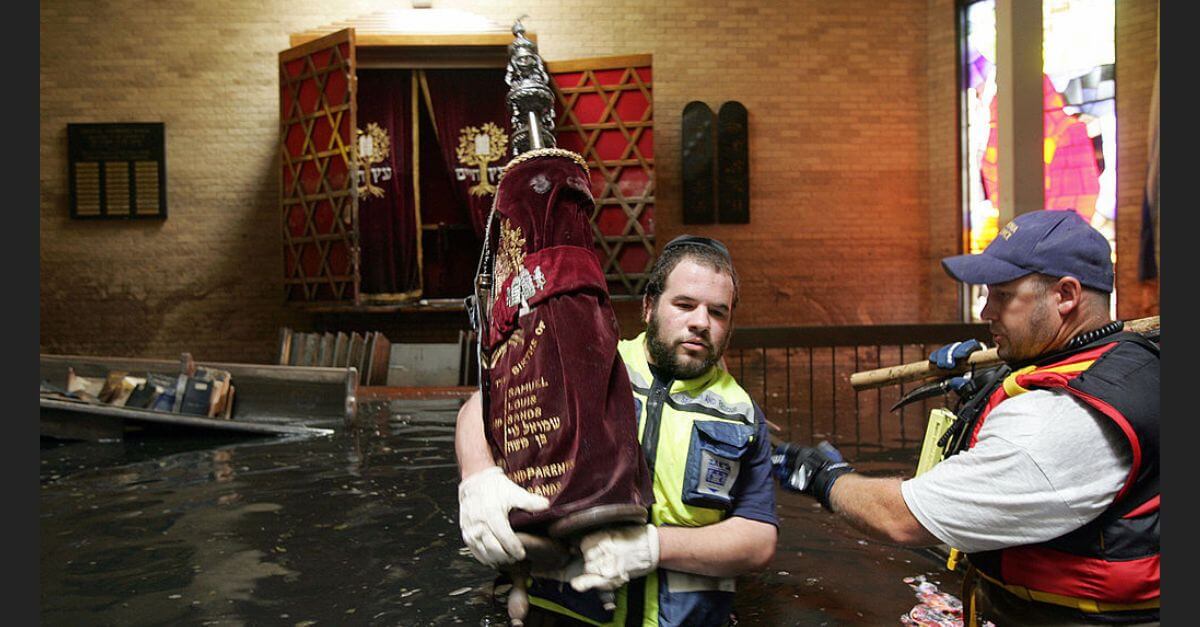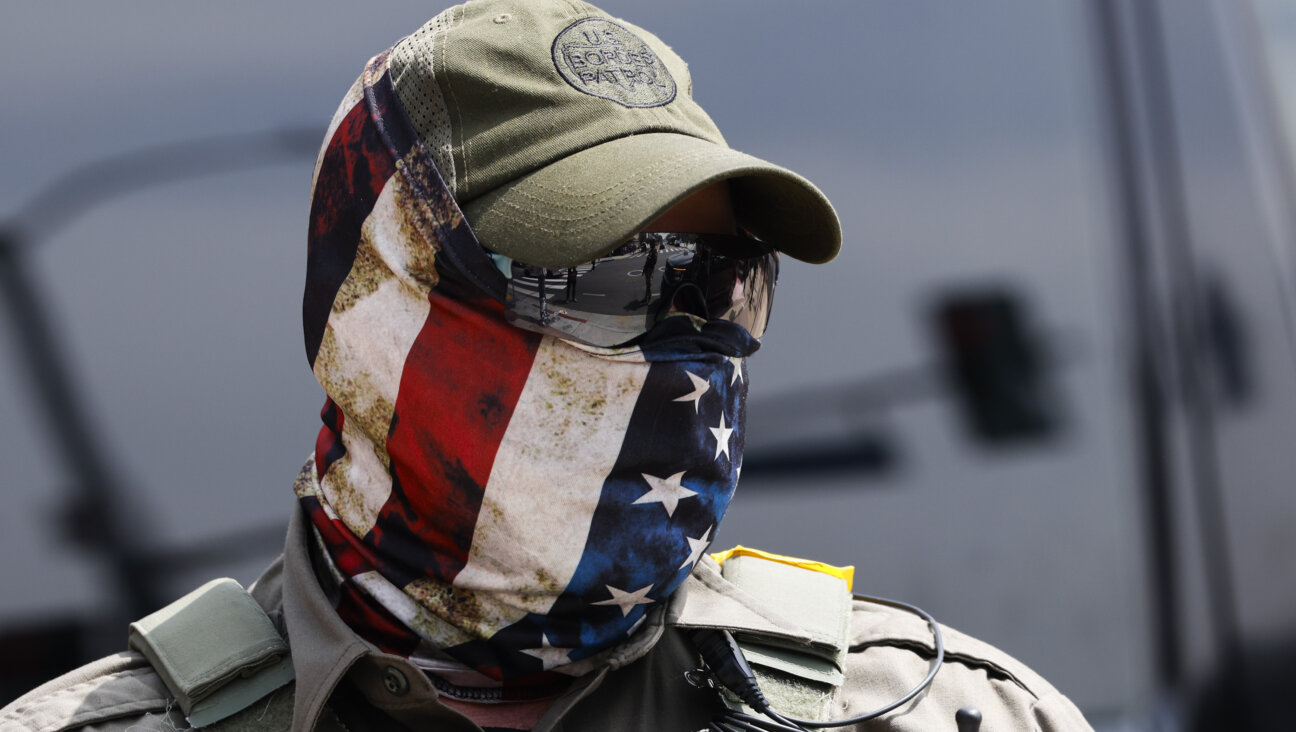Killers in White Gowns
Stalin’s Last Crime: The Plot Against the Jewish Doctors, 1948-1953
By Jonathan Brent and Vladimir P. Naumov
HarperCollins, 399 pages, $26.95.
* * *|
On January 13, 1953, just six weeks before Stalin died, an ominous article appeared in Pravda: The ever-vigilant Soviet authorities had “discovered” that several Kremlin doctors, mostly Jews, were in fact killers sent by American intelligence to destroy the nation’s leaders. For Soviet Jews, this terse disclosure about the “killers in white gowns” ushered in a period of fear and terror unusual even in a society where arbitrary arrests, denunciations and executions had become routine.
During that terrible winter, Jewish children came home from school bruised and beaten. Jews were assaulted on public buses, and patients shunned Jewish doctors. Dark rumors started to circulate that the government had decided to deport Soviet Jewry to the remote wastes of Birobidzhan, the Jewish autonomous region in the Far East. There were whispered reports of barracks and freight trains. Those in the know confirmed that famous Soviet Jews — including violinist David Oistrakh and ballerina Maya Plisetskaya — were told to sign a letter to Stalin that implored the Great Father to protect their nation from the wrath of the Russian people and noted that Siberia might be the perfect refuge from the imminent pogroms. (Rumor has it that Plisetskaya refused to sign.)
These terrifying accusations were only the culmination of a long litany of betrayal by the country that had once promised dignity, equality and an end to antisemitism. It was the Red Army that broke the back of the Wehrmacht, and hundreds of thousands of Jewish soldiers had fought in its ranks and won a disproportionate number of decorations for bravery. The Nazis had slaughtered close to 2 million Jews on Soviet territory, often with the connivance of the local population. But somehow the Soviet press became ever more reluctant to mention Jewish war heroes. There were no Jewish victims of the Holocaust, only “peaceful Soviet citizens.” Jews who returned to newly liberated areas could not get their old apartments back. When they turned for help to local party authorities, they encountered indifference and hostility. After the war, prominent writers Vassily Grossman and Ilya Ehrenberg prepared a “black book” that exposed the details of the Holocaust in the Soviet Union. At the last minute, the Soviet government halted its publication and destroyed the plates. (A copy did survive and the book was published in Russia after the collapse of the Soviet Union.)
By 1944 many Soviet Jews were appealing to the one organization in the country that they thought would give them a sympathetic hearing, the Jewish Anti-Fascist Committee. Set up in 1941 to disseminate pro-Soviet propaganda among world Jewry, the committee was not supposed to turn into a surrogate advocate for Soviet Jews. But confronted with the tragedy and suffering of their fellow Jews, Shlomo Mikhoels, the great Yiddish actor who headed the committee, and others decided to act. They asked Stalin to make Crimea a Jewish Soviet republic. At least there, they believed, Jews might make a fresh start — in a territory far more hospitable than distant Birobidzhan.
The request went nowhere, but Stalin did not forget how the Jews tried to “hand over the Crimea to the Americans.” After all, it all made sense — at least to Stalin. Many Soviet Jews had relatives in the United States, and Mikhoels had asked for the Crimea. Clearly the Jews were working hand in glove with the CIA to secure a strategic foothold for the Americans. In January 1948, he had Mikhoels murdered in a bizarre “traffic accident.” He then lost little time in destroying what was left of Soviet Yiddish culture. The GOSET, Moscow’s State Jewish Theater, closed down. So did the remnants of the Yiddish press. By the time the secret police came to arrest the Yiddish writers and the other members of the Jewish Anti-Fascist Committee, Soviet Jewish culture had already been destroyed.
Until now the accepted interpretation of the “Doctor’s Plot” was that it was the culmination of this policy of state antisemitism. A paranoid Stalin had finally decided to crush Soviet Jewry once and for all — and the terrifying specter of killer doctors was a perfect way to orchestrate an antisemitic carnival that would satisfy the masses and bind them ever closer to their Great Leader.
But in this new and important book, “Stalin’s Last Crime: The Plot Against the Jewish Doctors, 1948-1953,” Jonathan Brent and Vladimir P. Naumov argue that the Doctor’s Plot was much more than just another attack on Jews. Using government and secret police documents hitherto unavailable to researchers, Brent and Naumov assert that the plot was orchestrated by Stalin to justify a new purge of the party and the police and to prepare the country for a war with the United States. The choreography of the plot was extremely complex and tied together many different events: the heart attack of Politburo member A.S. Shcherbakov in 1945; the Lysenko affair, in which a crackpot biologist promised to revolutionize Soviet agriculture and successfully terrorized his fellow scientists; the death of Politburo member Andrei Zhdanov in 1948; the execution of the Leningrad Party leadership in 1950, and the arrest of Ministry of State Security head Abakumov in 1951. All this played out against a backdrop of rising tension with the United States and Stalin’s rabid suspicion that all Soviet Jews were potential American agents.
To make a complex story very short, the plot was based on the notion that elite doctors, taking their orders from important party and police leaders — who in turn were in cahoots with the United States and its ally, the Jews — planned to kill Stalin and other members of the Politburo. What gives Brent and Naumov’s story a certain plausibility is their assertion that Kremlin doctors indeed neglected Zhdanov’s medical treatment in 1948 after they guessed that he had fallen out of favor with Stalin. After Zhdanov’s death, a whistle blower named Lydia Timashuk sent a letter to Stalin that alleged medical malpractice. Stalin ignored Timashuk’s letter. After all, he had no reason to hound doctors who had correctly guessed what he wanted them to do. But four years later, the letter was just what he needed to set the case in motion.
The case was held together by thousands of pages of protocols of nonstop interrogations (which in turn reflected countless hours of beatings and torture). Stalin read them with a practiced eye. He was a hands-on leader who ordered beatings, prescribed manacles and made other suggestions to get victims to cooperate. Stalin was perfectly happy to shoot people, but he much preferred public show trials where witnesses would testify to meetings with foreign agents, divulge plans to poison the leadership and present “documents” that revealed the true scope of the emergency that faced the country. On live radio, prosecutors would elicit shocking details of plots that reached into the highest levels of the party and even the secret police. Millions of horrified citizens would listen and pray that Comrade Stalin would survive to protect them. For these public trials to work, however, Stalin needed cooperative witnesses and a story line that would be plausible enough to convince ordinary Soviet citizens (and gullible Western intellectuals).
The case against the members of the Jewish Anti-Fascist Committee had been so weak that even one of the military judges, Alexander Cheptsov, sent a letter to Politburo member Georgi Malenkov asking for a reinvestigation (for some unknown reason the authors call him Grigory
Malenkov). Speaking for Stalin, Malenkov warned Cheptsov to “execute the decision of the Politburo.” All but one of the accused were shot on August 12, 1952. But this was all done in secret. Stalin wanted something more: a choreographed blockbuster that would draw in Americans, Jews and his own secret police and party leadership and that would prepare the way for a new megapurge.
Meanwhile Stalin’s closest henchmen had good reason to fear for their safety. Stalin had already arrested Foreign Minister Vyacheslav Molotov’s Jewish wife. He also ordered his personal factotum, N. Poskrebyshev, to divorce his Jewish spouse. “Don’t worry,” Stalin told him, “we’ll find you another wife.” (Sure enough, one day Poskrebyshev returned to find a perky woman bustling around his apartment. He had plenty of time to get to know his new companion, since Stalin soon fired him.)
As for the doctors, one of their stubborn colleagues, Sophia Karpai, refused to confess. Her jailers tossed her into a refrigerated cell and beat her constantly. But she grimly hung on and, the authors speculate, delayed the public trial until Stalin’s death gave party leaders the chance to quash the entire macabre affair. Karpai died shortly after her release from prison.
According to Brent and Naumov, Stalin did not die an entirely natural death. He collapsed at his dacha on March 1, 1953, but no doctor arrived for several hours, and Stalin died on March 5. They cite evidence that Stalin might have suffered the effects of warfarin, a rat-killer and blood thinner. This is all speculation. Brent and Naumov are on solid ground, however, when they point out major inconsistencies and lies in Nikita Khrushchev’s account of Stalin’s last days. Right after his death, Stalin’s successors quashed the accusations against the doctors and instead arrested and executed internal affairs boss Lavrenti Beria. In his own account of the events, Khrushchev explained that they delayed trying to wake Stalin up or call a doctor because they thought he was suffering from a hangover. In fact, Khrushchev knew quite well that Stalin would likely not have been that drunk, but instead preferred to watch others drink, so he could watch them. Beria might indeed have been one of Stalin’s killers, but he also knew too much, and the new party bosses wanted him gone. (In addition, Abakumov and Riumin, key leaders of the secret police, were also shot.)
For anyone with a serious interest in Stalin, this is an indispensable book. The authors make many informed guesses and hypotheses, and some are more convincing than others. But Naumov and Brent certainly make a solid case that Stalin was much more than just “paranoid.”
So they did. But a system based on lies, purges and terror did not wear well in the long run. In the 1960s, the Soviet dissident Andrei Amalrik described the future of the Soviet system with an apt analogy: A policeman — representing the government — holds a rifle aimed at a citizen — Soviet society — who is ordered to hold his arms up; over time, the policeman slowly lowers the rifle, and the citizen gradually lowers his arms.
Indeed this is what happened: Stalin ruthlessly slaughtered millions; Khrushchev suppressed the Hungarian uprising in 1956 but no longer had the stomach for mass terror; Brezhnev flinched at the prospect of sending troops to Poland to smash the Solidarity movement; Gorbachev was unwilling to use massive force to save Soviet rule in Eastern Europe, and in 1991 the putschists and the army could not mow down thousands of people in the Moscow streets. Economics hastened the decline of the Soviet system. But it also collapsed of its own weight.















